Ants
Ants are among the most prevalent pests in households. They are also found in restaurants, hospitals, offices, warehouses, and other buildings where they can find food and water. Once ants have established a colony inside or near a building, they may be difficult to control.
There are over 12,000 species of ants throughout the world.
Inside a building, household ants carry on sugars, syrups, honey, fruit juice, fats, and meat. Long trails of thousands of ants may lead from nests to food sources, causing considerable concern among building occupants. Outdoors they are attracted to sweet, sticky secretions, or honeydew, produced by soft scales and aphids. Frequent outbreaks of scales and aphids occur when ants tend them to obtain their sweet secretions because the ants protect scales and aphids from their natural enemies.
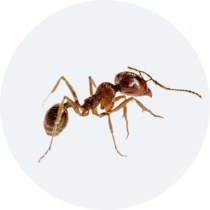
Ants may affect man adversely by stinging and biting, by invading and contaminating food, by nesting in lawns, golf courses, by gnawing holes in various types of fabrics, removing rubber insulation from telephone wires, killing young poultry, birds, livestock?and possibly transmitting certain human diseases in crawling over sputum, feces, . . . etc.
Types of Ants
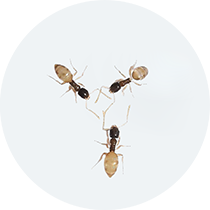 Actual Size: 1.3 to 1.5 mm Characteristics: Tiny; head and thorax are dark and the body is light, almost translucent. Legs: 6 Antennae: Yes Wings: No Habitat: Constructs nests in moist grass and potted plants. Indoors, will nest in small spaces such as cracks, spaces between cabinetry, baseboards, books, and wall voids. Habits:
Actual Size: 1.3 to 1.5 mm Characteristics: Tiny; head and thorax are dark and the body is light, almost translucent. Legs: 6 Antennae: Yes Wings: No Habitat: Constructs nests in moist grass and potted plants. Indoors, will nest in small spaces such as cracks, spaces between cabinetry, baseboards, books, and wall voids. Habits:- Also known as the black-headed ant
- Ghost ants exhibit rapid, erratic movement that resembles small spiders.
- Like odorous house ants, the ghost ant excretes a rotten coconut smell.
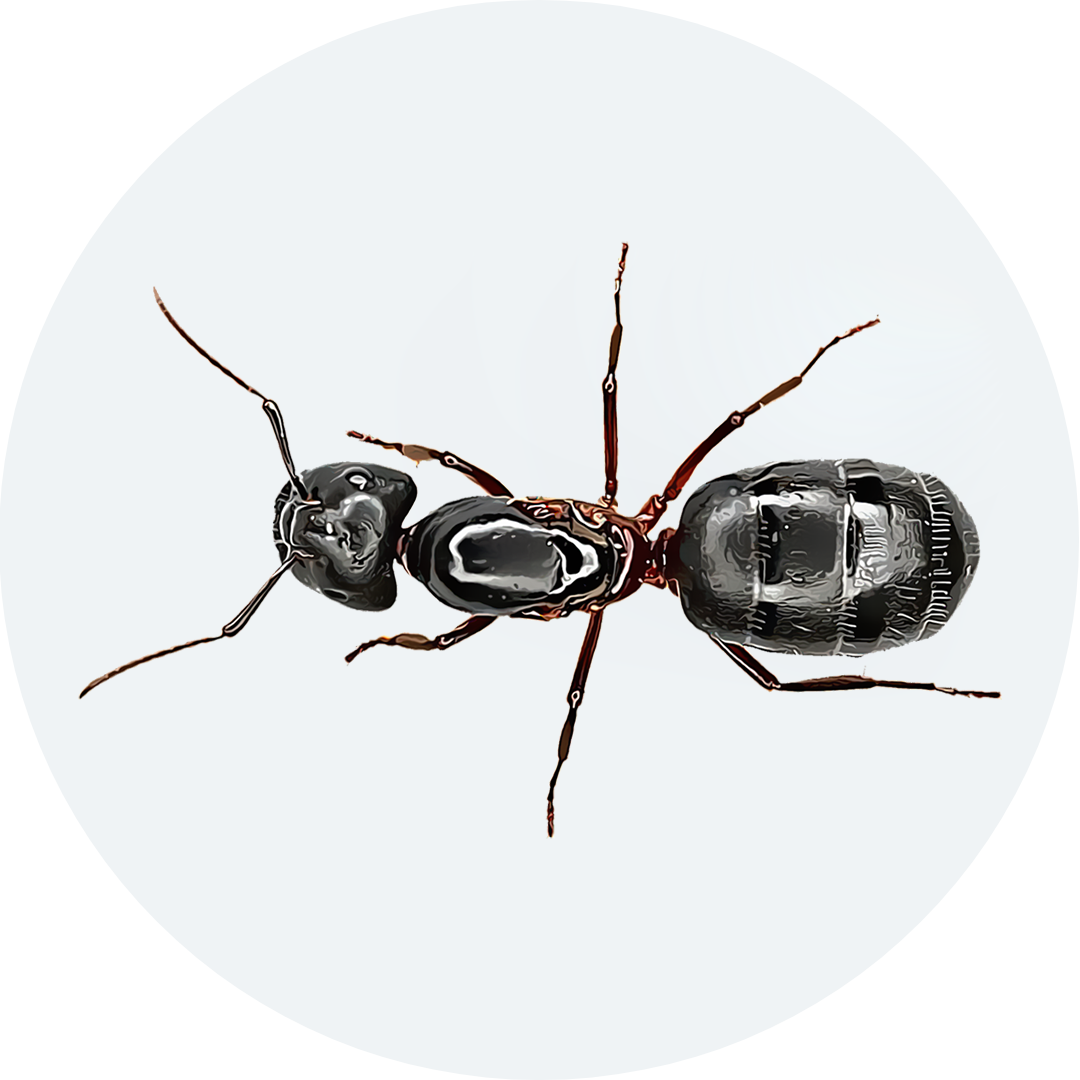
Characteristics: Large; red, black, or a combination of both.
Legs: 6
Antennae: Yes
Wings: Carpenter ant swarmer have two sets of wings.
Habitat:
Prefer damp, moist wood, constructing their nests in hollow trees, logs, posts, landscaping timbers, and wood used in homes and other structures.
Habits:
- Frequently mistaken for termites, carpenter ants are wood-destroying pests.
- Drawn to moisture, they can establish nests both inside and outside of structures.
- Heavy carpenter ant activity in the home can indicate a moisture issue within the structure.

Characteristics: Blackish to red in color. Fire ants have a stinger in their abdomen.
Legs: 6
Antennae: Yes
Wings: The reproductive males and females have wings.
Habitat: Fire ants build mounds in almost any soil, favoring structural foundations and landscaping in open sunny areas.
Habits:
- Will bite and then use their stinger, located on their abdomen.
- Fire ants feed on young plants and seeds, and will also attack small animals.
- Colonies build above-ground mounds that provide excellent conditions to raise their young.
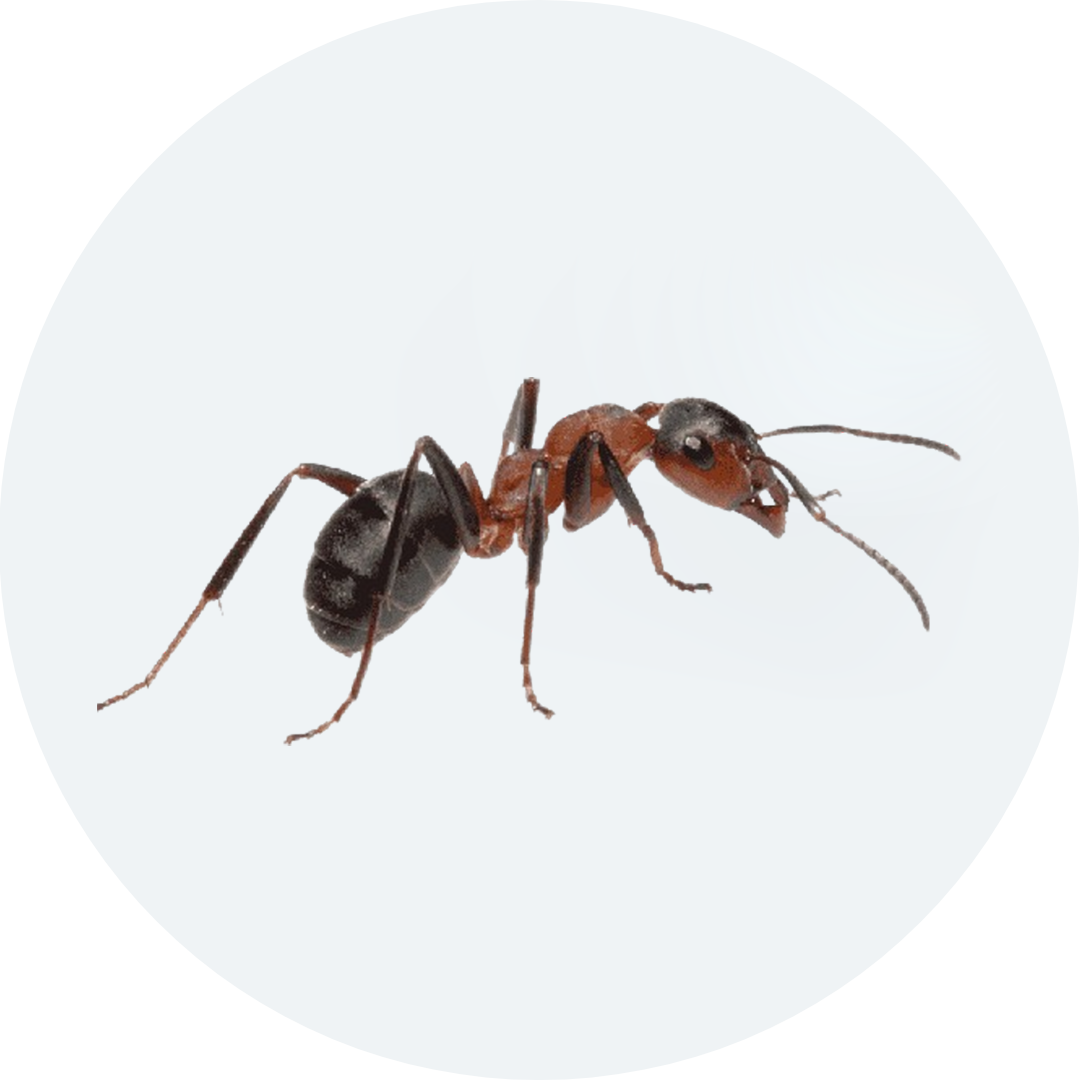
Characteristics: Light to very dark brown.
Legs: 6
Antennae: Yes
Wings: The reproductive males and females have wings.
Habitat: Builds nests near water sources. Outdoors, nests are located beneath boards, stones, or at the base of shrubs. Indoors, will build nests in wall voids and insulation.
Habits:
- Attracted to wet environments near food sources.
- Will contaminate food and spread bacteria when foraging for food in pantries and kitchens.
- Drip irrigation lines provide water and serve like highways for the movement of ants to form new colonies.
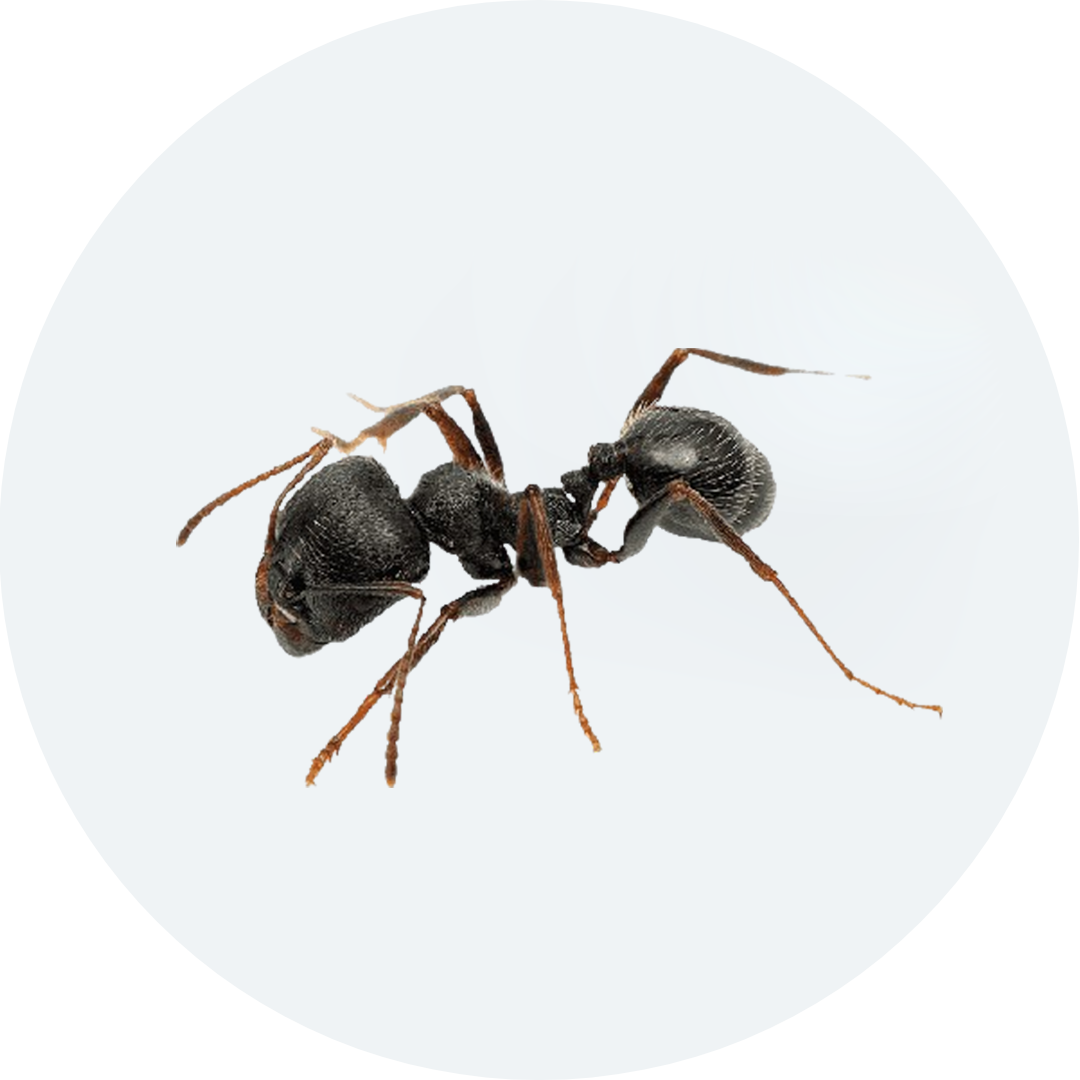
Characteristics: Light to dark brown to blackish; dark parallel lines run down the head and thorax.
Legs: 6
Antennae: Yes
Wings: The reproductive males and females have wings.
Habitat: Nests are located in open soil or under stones and pavement, masonry or wood, near sidewalks, patios, and driveways.
Habits:
- Prefers to feed on meat proteins and greasy foods.
- Indoors, will construct nests in walls, insulation, and underneath floors.
- Outdoors pavement ants nest under flat stones, sidewalks, and concrete slabs.
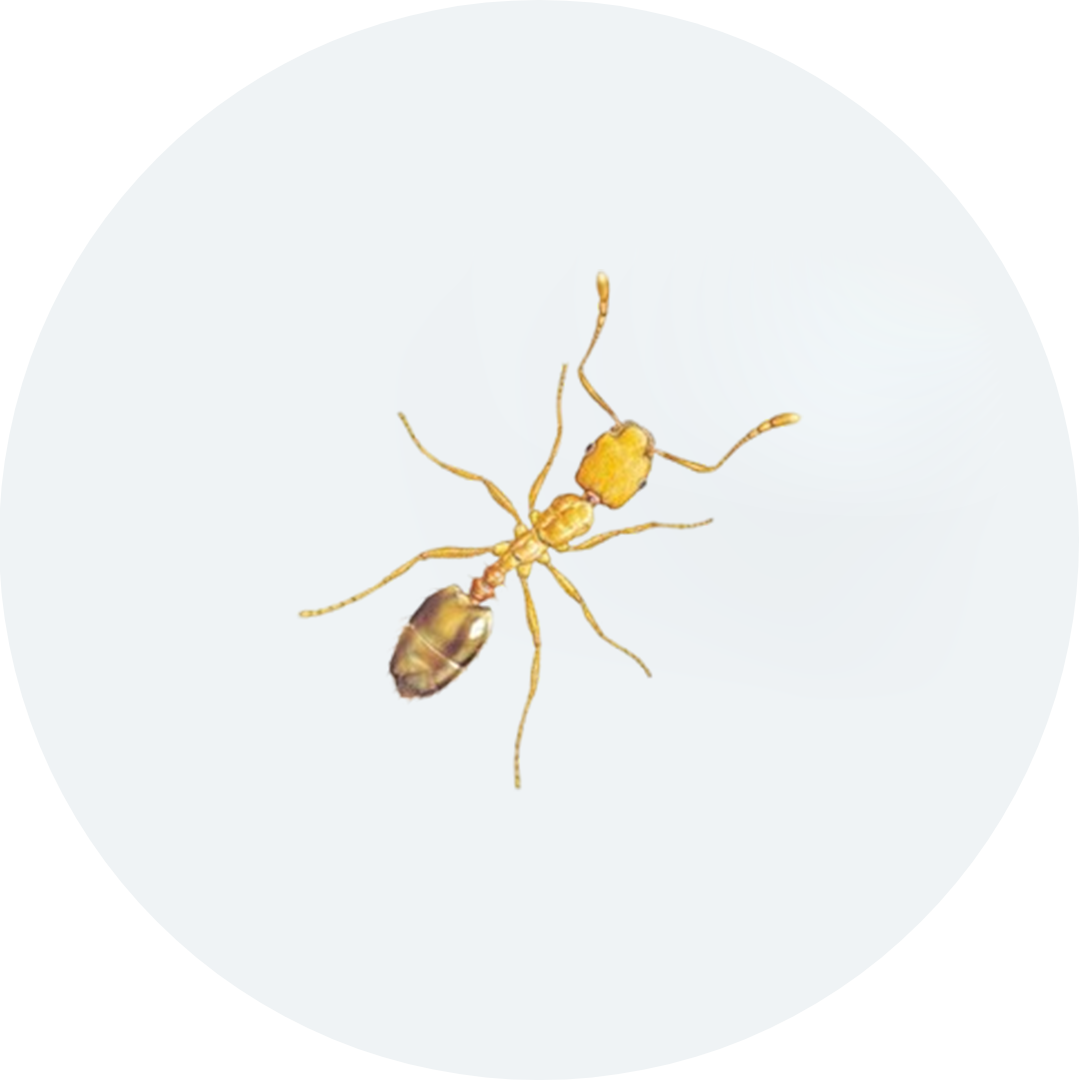
Characteristics: Small; typically light yellow to red, with black markings on the abdomen.
Legs: 6
Antennae: Yes
Wings: No
Habitat: Nests are often located in inaccessible spots near moisture, such as kitchens, bathrooms, interior wall voids, under floors, and behind baseboards.
Habits:
- Attracted to moisture and will nest in inaccessible areas.
- Colonies are very large with over 300,000 individuals and multiple queens.
- Potentially dangerous in hospitals due to their ability to transmit disease organisms.
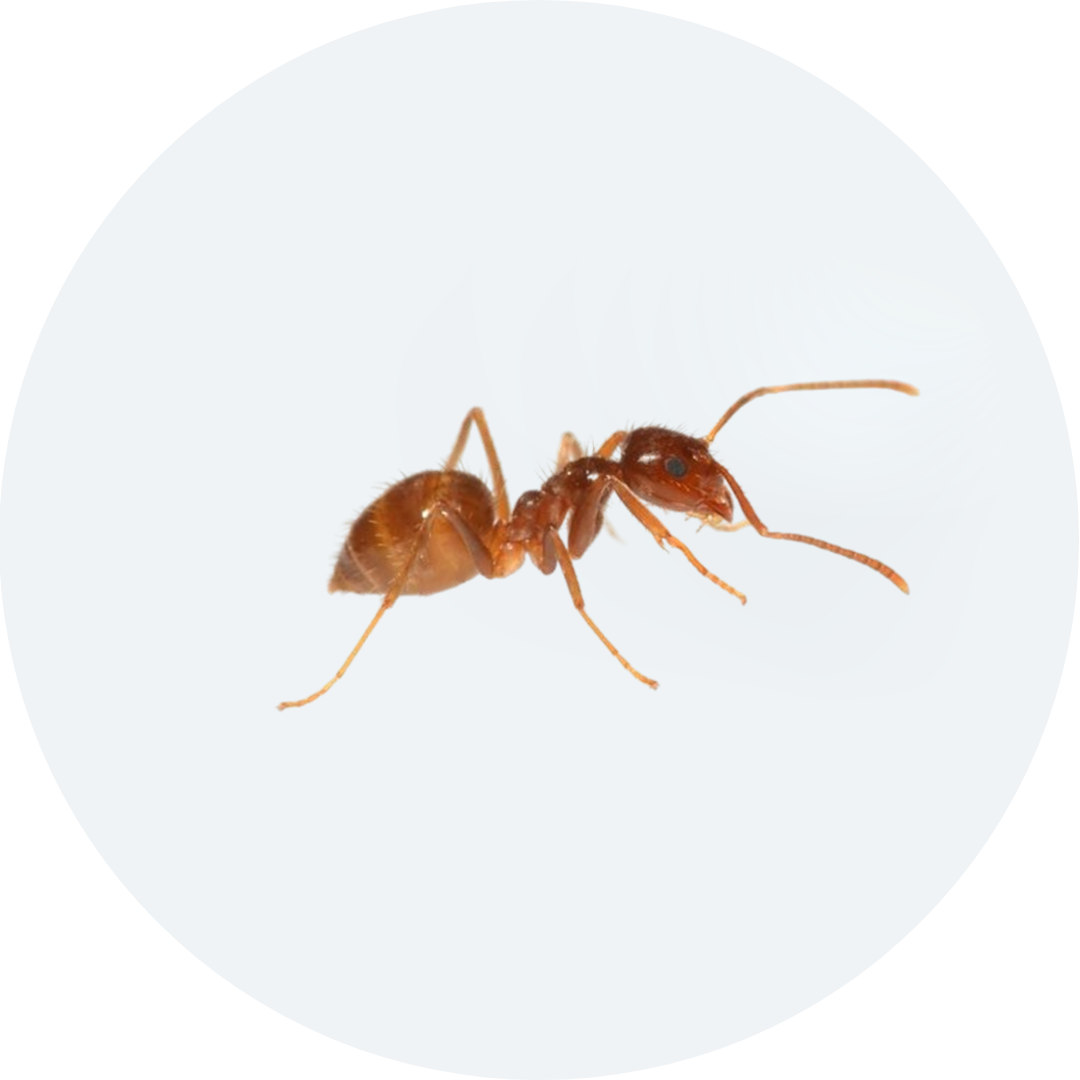
Characteristics: Black.
Legs: 6
Antennae: Yes
Wings:Males and females have wings, but rarely fly.
Habitat: Thrive in both moist and dry environments. Will nest in electronics, underneath floorboards, trash bins, and inside car engines.
Habits:
- Named for their erratic, highly unpredictable movements.
- Drawn to electrical equipment, they have been found in televisions, computers, and other appliances.


